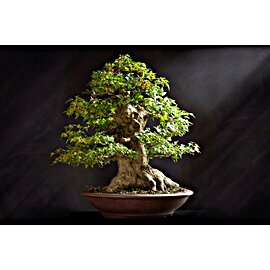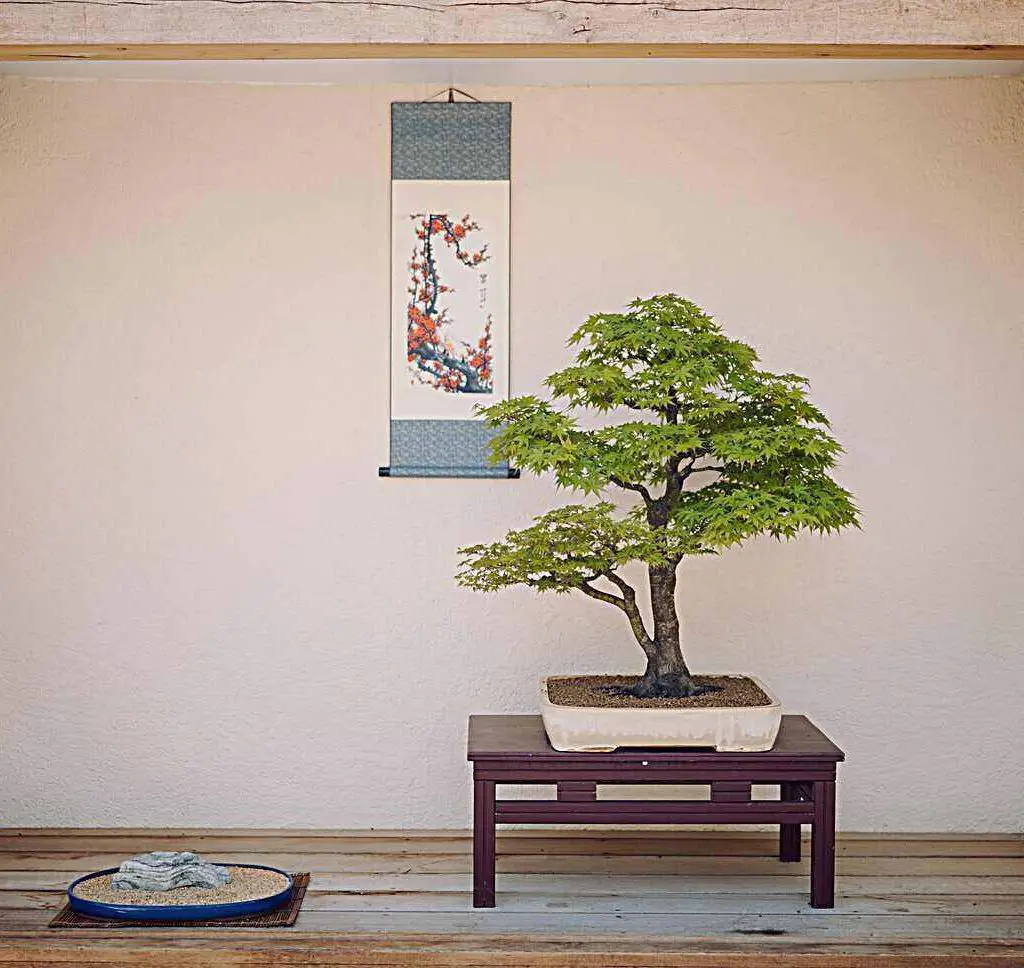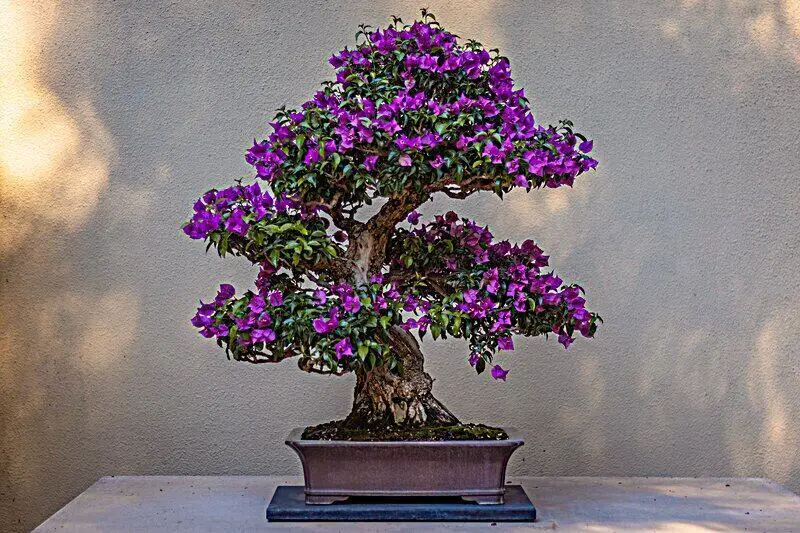Bonsai trees have captured the imagination of people for centuries. These enchanting miniature trees not only bring nature indoors but also provide a sense of tranquility and beauty. If you’re a beginner looking to embark on a bonsai adventure, it’s essential to choose the right tree that suits your skill level and preferences. In this article, we will explore the world of bonsai trees and discuss the ones that are perfect for beginners.

Table of Contents
- What are bonsai trees?
- Benefits of growing bonsai trees
- Importance of choosing the right bonsai tree for beginners
- Popular Bonsai Trees for Beginners
- Tips for Growing Bonsai Trees
- Common Mistakes to Avoid
- Conclusion
- FaQs:
What are bonsai trees?
Bonsai trees are living artworks created through the cultivation and training of small trees in containers. The art of bonsai originated in China and later developed in Japan, where it gained widespread popularity. Bonsai, which translates to “tray planting,” involves meticulous care and shaping techniques to create miniature trees that resemble their larger counterparts found in nature.
Benefits of growing bonsai trees
Growing bonsai trees offers numerous benefits. Firstly, it allows individuals to connect with nature in a unique way, even in urban environments. Bonsai trees provide a calming presence and can improve the overall ambiance of any space. Additionally, nurturing a bonsai tree promotes mindfulness, patience, and a deeper understanding of horticulture.
Importance of choosing the right bonsai tree for beginners
As a beginner, selecting the right bonsai tree is crucial for a successful and enjoyable experience. Different bonsai species have varying care requirements, and choosing one that aligns with your skill level is essential. Opting for a beginner-friendly bonsai tree ensures a higher chance of survival and growth, boosting your confidence in bonsai cultivation.
Popular Bonsai Trees for Beginners
When starting your bonsai journey, consider the following beginner-friendly bonsai tree options:
Juniper Bonsai
Juniper bonsai trees are ideal for beginners due to their hardiness and adaptability.
These trees have needle-like foliage and produce small berries, adding visual interest.
Junipers can withstand various climates and require minimal maintenance.
Ficus Bonsai
Ficus bonsai trees are known for their forgiving nature and ability to thrive indoors.
They have glossy leaves and produce aerial roots, creating a unique and artistic appearance.
Ficus bonsai trees are relatively easy to care for, making them popular among beginners.
Chinese Elm Bonsai
Chinese Elm bonsai trees are well-suited for beginners due to their resilience and adaptability.
These trees have small, serrated leaves and beautiful trunks with distinctive bark patterns.
Chinese Elm bonsai trees tolerate different light conditions and can withstand slight neglect.
Jade Bonsai
Jade bonsai trees are excellent choices for beginners as they are hardy and require a minimal care
They have thick, succulent leaves and an appealing trunk that develops an aged appearance over time.
Jade bonsai trees prefer bright light and infrequent watering, making them low-maintenance options.
Japanese Maple Bonsai
Japanese Maple bonsai trees are prized for their stunning foliage, which changes color with the seasons.
They have delicate, palate leaves and a graceful, sculptural appearance. While Japanese Maple bonsai trees require attention to detail, they are rewarding for patient beginners.
Pomegranate Bonsai
Pomegranate bonsai trees are beginner-friendly and offer beautiful flowers and fruits. They have small leaves and an intriguing trunk structure, making them visually appealing. Pomegranate bonsai trees prefer full sun and require regular pruning to maintain their shape.

Tips for Growing Bonsai Trees
Once you’ve chosen the perfect bonsai tree for beginners, it’s important to understand how to care for and nurture it. Here are some essential tips to help you on your bonsai journey:
Proper watering techniques
Watering is a crucial aspect of bonsai tree care. Finding the right balance between not watering enough and watering excessively is crucial. Check the moisture level of the soil regularly and water the bonsai tree when the top layer feels slightly dry. Avoid watering on a fixed schedule as it may vary depending on environmental conditions and the specific bonsai tree species.
Pruning and shaping
Pruning and shaping are essential for maintaining the desired size and form of your bonsai tree.
Use sharp, clean tools to prune branches and foliage. Regular pruning encourages new growth and enhances the tree’s overall appearance. Research the specific pruning techniques for your bonsai tree species to ensure proper care.
Choosing the Right soil
Bonsai trees require well-draining soil to prevent root rot and promote healthy growth.
Use a bonsai-specific soil mix or create your own by combining components like akadama, pumice, and lava rock. Avoid using regular potting soil, as it retains too much moisture and may suffocate the bonsai tree’s roots.
Providing adequate sunlight
Sunlight is essential for the health and development of bonsai trees. Place your bonsai tree in a location that receives the appropriate amount of sunlight for its specific species. While different bonsai trees have varying light requirements, most thrive in bright, indirect light.
Fertilizing the bonsai
Fertilizing provides essential nutrients for the bonsai tree’s growth and overall health. Use a balanced, slow-release bonsai fertilizer or organic alternatives to nourish the tree. Follow the recommended fertilizing schedule for your specific bonsai tree species.

Common Mistakes to Avoid
To ensure the success of your bonsai tree journey, be mindful of these common mistakes and avoid them:
Overwatering
Beginners often make the mistake of overwatering, which is a common issue to avoid. Avoid saturating the soil, as it can lead to root rot and other fungal diseases. Make sure to let the soil dry out a little between each watering to maintain optimal moisture levels.
Underwatering
Neglecting to water your bonsai tree adequately can lead to dehydration and stress. Monitor the soil moisture level and provide water when necessary. Adjust your watering frequency based on the climate and specific needs of your bonsai tree.
Improper pruning
Pruning mistakes can hinder the growth and health of your bonsai tree. Avoid excessive pruning, as it may weaken the tree or disrupt its natural form. Research proper pruning techniques for your specific bonsai tree species.
Using the wrong soil
Using regular potting soil or garden soil is not suitable for bonsai trees. These soils retain too much moisture and can lead to root rot. Invest in a proper bonsai soil mix or create your own to ensure proper drainage.
Placing the bonsai in unsuitable light conditions
Insufficient or excessive light can negatively impact your bonsai tree’s health. Understand the light requirements of your specific bonsai tree species and provide the appropriate conditions. Monitor the tree’s response to light and adjust its placement accordingly.
Conclusion
Choosing the right bonsai tree as a beginner is essential for a rewarding and successful bonsai journey. Consider the unique characteristics and care requirements of each bonsai species before making your choice. Remember to pay attention to proper watering, pruning, soil selection, sunlight, and fertilization to ensure the optimal growth and well-being of your bonsai tree. With dedication and patience, you can create a captivating miniature masterpiece that brings joy and tranquility to your life.
FaQs:
Q: What is the easiest bonsai tree for beginners?
A: Juniper bonsai trees are considered one of the easiest options for beginners due to their adaptability and minimal care requirements. They are forgiving trees that can withstand various climates and provide an excellent introduction to the art of bonsai.
Q: What is the recommended watering frequency for my bonsai tree?
A: The frequency of watering depends on various factors such as climate, species, pot size, and soil composition. As a general guideline, check the moisture level of the soil regularly and water when the top layer feels slightly dry. Avoid overwatering or underwatering by adjusting the watering frequency accordingly.
Q: Can bonsai trees be grown indoors?
A: Yes, certain bonsai tree species can thrive indoors. Ficus bonsai trees, for example, are well-suited for indoor cultivation as they tolerate lower light conditions. It’s important to choose a bonsai tree species that is suitable for indoor growth and provides adequate light, humidity, and care to ensure its well-being.
Q: What tools do I need for bonsai tree care?
A: Basic tools for bonsai tree care include pruning shears, concave cutters, wire cutters, root hooks, and bonsai soil scoops. These tools help with pruning, shaping, wiring, and repotting your bonsai tree. Invest in high-quality tools and ensure they are kept clean and sharp for optimal performance.
Q: How long does it take for a bonsai tree to grow?
A: The growth rate of bonsai trees varies depending on the species and environmental conditions. Some bonsai trees may take several years to develop the desired aesthetic, while others can be shaped more quickly. Bonsai cultivation requires patience and a long-term commitment to nurturing and refining the tree over time.
Remember, the journey of bonsai cultivation is as rewarding as the final result. Enjoy the process, learn from your experiences, and witness the beauty of nature unfold in the palm of your hand. Happy bonsai gardening!













